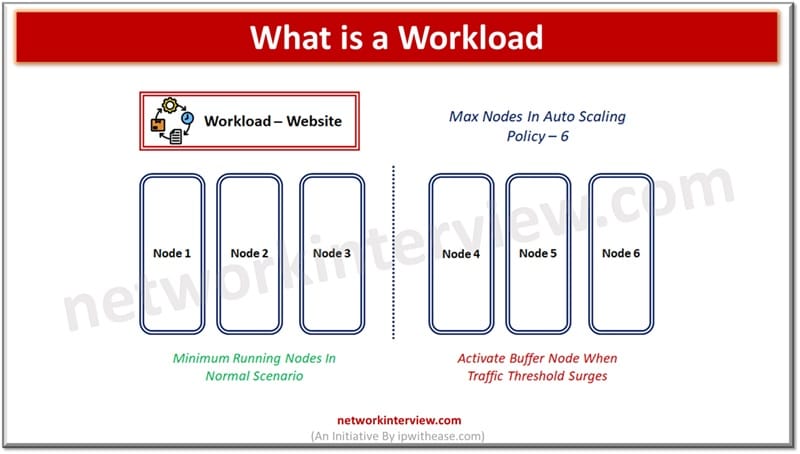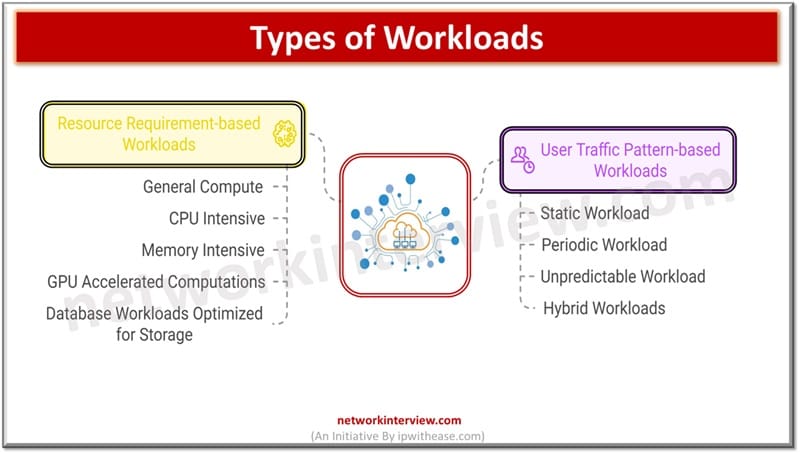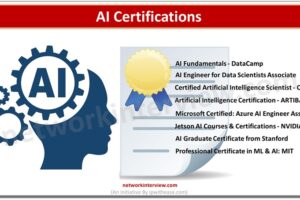
What is a Workload in Cloud Computing? Types & Characteristics
Workload terminology is generally associated with cloud computing. In cloud computing any application or service is deployed over the cloud referred to as workload which is consuming the computer (CPU, memory) and physical storage. Workload term is specifically associated with cloud as it is very different from application and service hosting on a physical infrastructure in the traditional IT landscape.
In today’s topic we will learn about what is cloud workload or workload in cloud computing, what are the different types of workloads and their key characteristics.
What is Cloud Workload?
When we say workload the first thing that pops up in our mind is cloud. Workload may have massive microservices working together or could be a simple solo service. Workloads consume computing resources and storage. The workload term has a distinctive characteristic as it is abstract and portable. When a service is called workload it means it can be moved across several cloud platforms or from on-premises to cloud or vice versa seamlessly without any dependencies as it is highly portable in nature.
Types of Workloads
Workloads are classified on several categories based on its architecture, requirement of resources, consumption patterns and traffic patterns etc. Let’s look at each one of them one by one.

Resource Requirement-based Workloads
- General Compute – is mostly used for web applications , distributed data stores, microservices which are containerized etc. They do not require any specific computation needs and run on default cloud instances capacities generally.
- CPU Intensive – some workloads have higher processing requirements which require large CPU memory to execute tasks. Such as handling concurrent user sessions, big data analytics , 3D modelling and video recording etc.
- Memory Intensive – like some workloads need more CPU power similar certain workloads require more memory. The distributed database caching, real time data streaming etc. are some examples of memory intensive workloads.
- GPU Accelerated Computations – Power of GPU along with CPU is required for certain applications such as seismic data analysis, fluid dynamics computation, data processing for autonomous vehicles, speech recognition etc.
- Database Workloads Optimized for Storage – certain workloads require highly capable NoSQL databases, in-memory databases, data warehousing.
User Traffic Pattern-based Workloads
- Static Workload – is meant for workloads where resource utilization is fairly constant and as such there are no traffic spikes etc. these workloads could be a utility deployed on cloud used by limited users for an instance in a private network, such as knowledge base or tax calculation utility used within an organization.
- Periodic Workload – having high utilization during specific periods such as performance evaluation software, payroll processing application etc. serverless compute is considered best for this kind of applications as there is no need to pay for idle instances and only pay for utilized compute during peaks period.
- Unpredictable Workload – is usually generated in social media applications, online multiplayer games, video games and streaming applications. Traffic spikes are exponential. Auto scaling capability is such cases is a life saver which adds instances dynamically as and when required
- Hybrid Workloads – are all above stated workloads which may require a mix of infrastructure capabilities such as CPU, GPU , memory for high and unpredictable workloads.
Conclusion
Cloud workloads support different computing tasks and making the right choice of type of cloud workload storage is very crucial to keep Opex costs under check without compromising the applications and services availability and performance.
Also, it is important to understand that certain types of applications are better fit for traditional infrastructure some examples are high-performance applications which require lot of disk I/O and network throughput and consistently read / write to disk systems, Applications which demand low latency over network which require high throughput replication and clustering, Applications having specific hardware dependencies due to its legacy.



